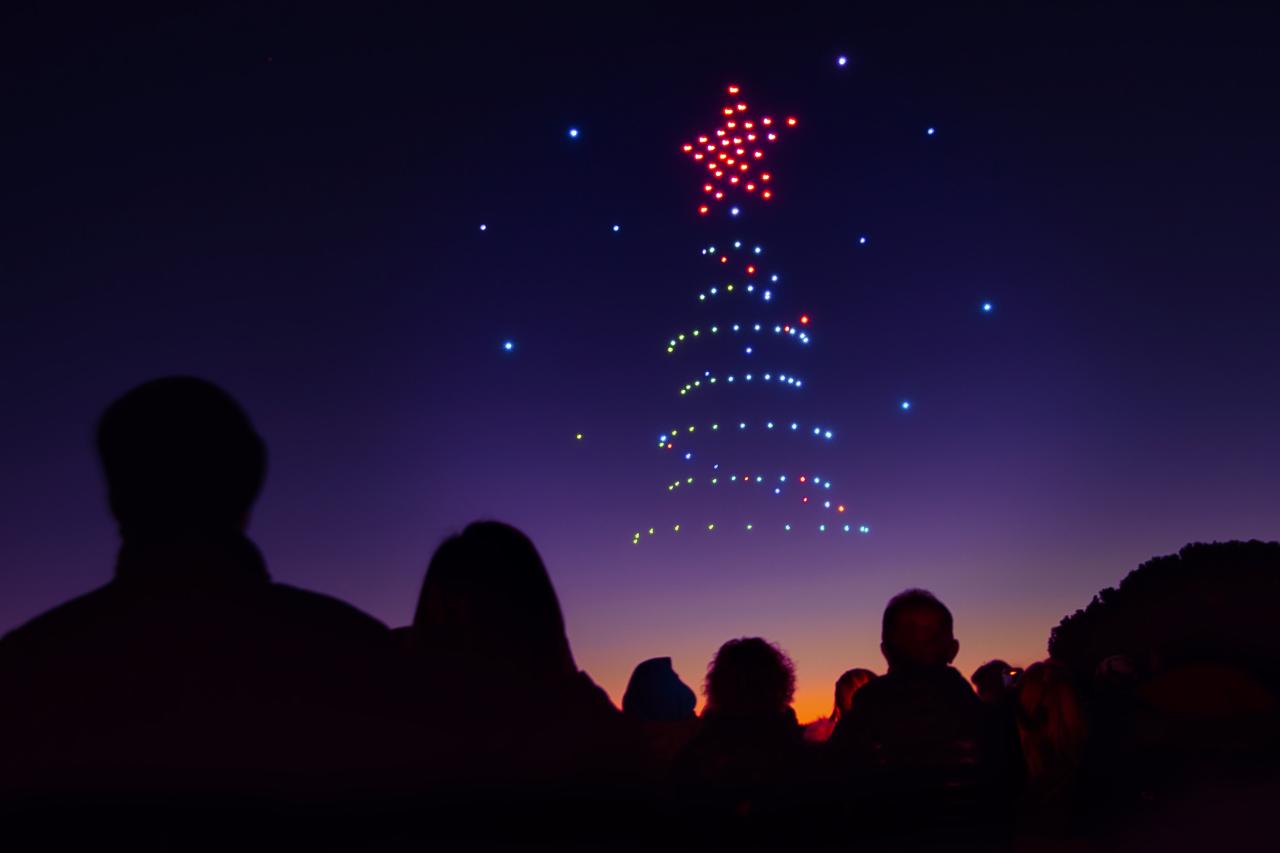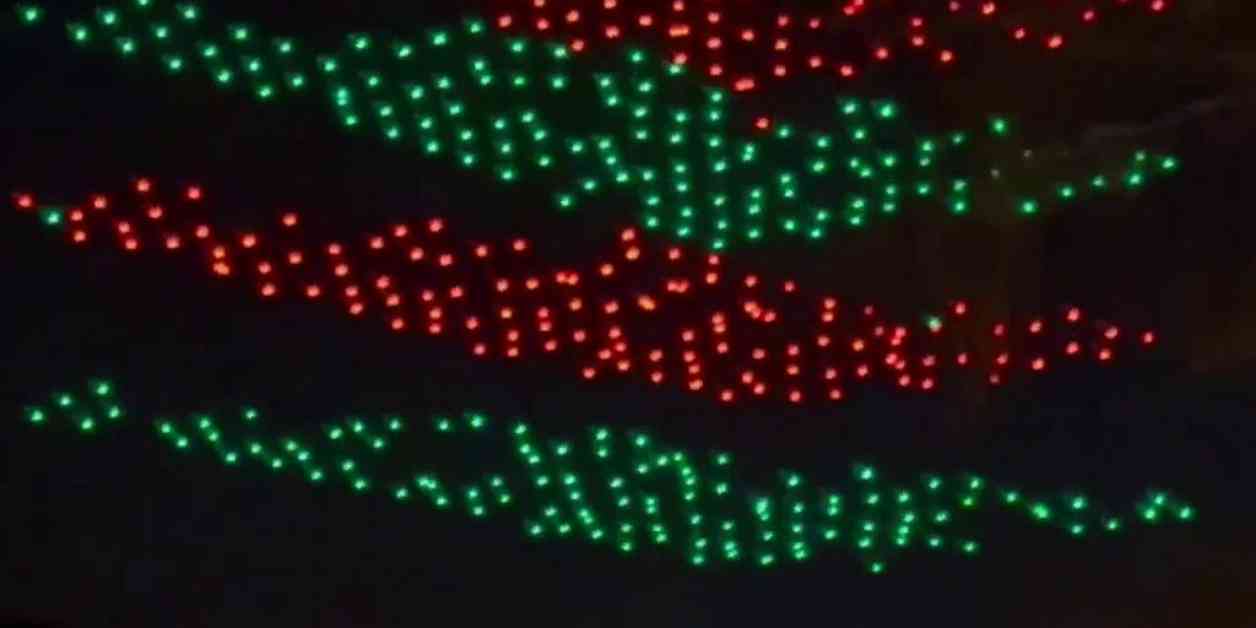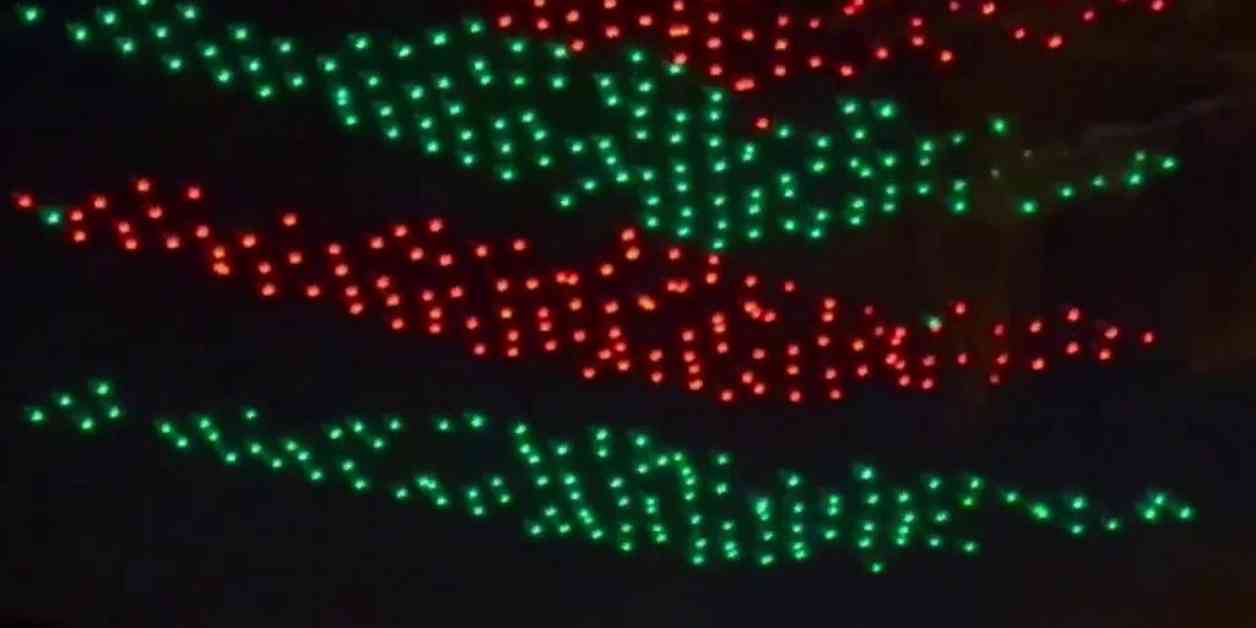Drone show accidents, while relatively rare, highlight critical safety concerns within the rapidly expanding world of drone technology. These incidents, ranging from minor malfunctions to catastrophic failures, underscore the need for robust safety regulations, rigorous pilot training, and a comprehensive understanding of the technological and environmental factors that can contribute to such events. This exploration delves into the various causes, consequences, and preventative measures associated with drone show accidents, aiming to provide a clearer picture of the risks and potential solutions.
The increasing popularity of drone light shows necessitates a thorough examination of the potential hazards. From sophisticated programming errors to unpredictable weather conditions, the potential for accidents is ever-present. Understanding the diverse factors that contribute to these incidents is crucial for mitigating risks and ensuring the continued safe and spectacular use of drones in public displays.
Drone show accidents, while rare, highlight the inherent risks in coordinating large-scale aerial displays. A recent example illustrating these challenges is the orlando drone show malfunction , where technical difficulties led to unexpected behavior. Understanding such incidents is crucial for improving safety protocols and preventing future drone show accidents.
Drone Show Accidents: A Comprehensive Analysis
Drone light shows, while visually stunning, present inherent risks. Understanding the various factors contributing to accidents is crucial for enhancing safety protocols and preventing future incidents. This analysis explores the types of accidents, contributing factors, and mitigation strategies, aiming to improve the safety and reliability of drone show operations.
Types of Drone Show Accidents

Drone show accidents vary widely in severity and impact. They range from minor malfunctions, such as individual drone failures, to catastrophic events involving multiple drones and significant damage. These accidents can be categorized based on the extent of damage, the number of drones involved, and the nature of the malfunction.
Recent drone show accidents highlight the need for robust safety protocols. The potential for mishaps underscores the importance of reliable monitoring systems, such as the impressive high-definition view provided by the cobequid pass camera , which could offer valuable data for post-incident analysis. Understanding these incidents is crucial for preventing future drone show accidents and ensuring public safety.
Common causes include GPS signal loss, mid-air collisions, battery failures, software glitches, and pilot error. Accidents may involve different drone models and technologies, highlighting the need for robust safety measures across the board. For example, a failure in a swarm coordination system could lead to a chaotic cascade of collisions, whereas a single drone’s motor failure might result in a localized incident.
| Accident Type | Cause | Consequences | Example |
|---|---|---|---|
| Single Drone Failure | Motor failure, battery depletion | Minor damage, possible replacement | A DJI Mavic 2 Pro experiences a motor malfunction during a show, resulting in a controlled descent and minimal damage. |
| Mid-Air Collision | GPS interference, software glitch, pilot error | Multiple drone damage, potential injuries | Two drones collide during a synchronized flight maneuver, causing damage to both units. |
| System-Wide Malfunction | Communication failure, software bug | Widespread drone failure, significant damage | A software bug affects the entire drone swarm, causing uncontrolled descent and damage to multiple drones. |
| Environmental Impact | High winds, heavy rain | Drone damage, show cancellation | Strong winds cause multiple drones to crash, resulting in significant damage and show cancellation. |
Safety Regulations and Protocols, Drone show accident
Various countries have implemented regulations and safety protocols for drone shows. These often involve licensing requirements for pilots, pre-flight inspections, and limitations on flight areas and altitudes. Robust risk assessment and mitigation strategies are essential, encompassing factors like weather conditions, potential hazards, and emergency procedures.
Pilot training and certification are paramount. Thorough training programs cover emergency procedures, risk management, and the technical aspects of drone operation. Well-defined emergency response plans are crucial, outlining procedures for dealing with various scenarios, including communication failures, drone malfunctions, and unexpected weather events.
Technological Factors Contributing to Accidents

Technological limitations and vulnerabilities contribute significantly to drone show accidents. GPS interference can lead to inaccurate positioning and collisions, while communication failures can result in loss of control. Software glitches, particularly in complex swarm control systems, can trigger cascading failures.
Different drone control systems have varying safety features. Redundant systems, fail-safes, and robust communication protocols enhance safety. A hypothetical scenario could involve a sudden loss of GPS signal in a large swarm, leading to uncontrolled dispersion and potential collisions, unless backup systems are in place.
Human Error in Drone Shows
Human error plays a significant role in drone show accidents. Pilot errors, such as improper flight planning or inadequate response to emergencies, are common causes. Crew negligence, including inadequate pre-flight checks or insufficient supervision, can also contribute to incidents. Strategies for minimizing human error include rigorous training, standardized operational procedures, and comprehensive checklists.
- Pre-flight checklist: Battery levels, GPS signal strength, software updates, communication systems.
- In-flight checklist: Monitoring drone status, environmental conditions, communication integrity.
Environmental Factors and Accidents

Environmental conditions significantly impact drone show safety. Strong winds, heavy rain, and extreme temperatures can affect drone performance and stability, leading to accidents. Mitigation strategies include careful weather monitoring, selecting suitable locations, and having contingency plans for adverse weather conditions.
Environmental factors can interact with technological limitations to exacerbate accidents. For example, strong winds could overwhelm a drone’s stability control system, leading to a crash, while rain could compromise the drone’s electronics and GPS reception.
Post-Accident Investigation and Analysis
Investigating drone show accidents involves a systematic approach. Evidence collection includes examining the damaged drones, reviewing flight logs, and interviewing witnesses. Root cause analysis identifies the underlying factors that contributed to the accident. Thorough documentation is crucial, including accident reports, investigation findings, and lessons learned.
- Detailed examination of the damaged drones.
- Review of flight logs and telemetry data.
- Interviews with pilots, crew members, and witnesses.
- Analysis of weather data and environmental conditions.
- Identification of contributing factors (technical, human, environmental).
Impact and Consequences of Accidents
Drone show accidents can have severe consequences, including property damage, injuries to spectators or personnel, and reputational harm to the organizers. Economic impacts include repair costs, potential lawsuits, and lost revenue. Societal impacts can include decreased public trust in drone technology and stricter regulations.
A significant drone show accident involving multiple drones crashing into a populated area could result in widespread damage, injuries, and significant legal and financial repercussions. The visual representation would depict a chaotic scene with fallen drones, emergency responders, and injured individuals. The long-term consequences could involve increased insurance premiums, stricter regulations, and a decline in public support for drone shows.
In conclusion, the prevention of drone show accidents requires a multifaceted approach encompassing stringent safety regulations, advanced technological safeguards, comprehensive pilot training, and meticulous pre-flight checks. By addressing the technological limitations, human error, and environmental factors discussed herein, the industry can strive towards a future where spectacular drone shows are enjoyed without compromising safety. Continuous improvement and proactive risk management are key to minimizing the potential for future incidents and ensuring the responsible and safe use of this exciting technology.
FAQs
What is the most common cause of drone show accidents?
While varied, pilot error, software glitches, and adverse weather conditions frequently contribute to drone show accidents.
What kind of insurance is needed for drone show operations?
Comprehensive liability insurance covering potential damage and injuries is crucial for drone show operators.
Are there international standards for drone show safety?
Drone show accidents, while rare, highlight the importance of meticulous planning and safety protocols. A recent incident underscores the need for rigorous checks, prompting reflection on the industry’s best practices. For instance, the impressive scale and precision demonstrated at the orlando drone show showcase the potential, but also the potential risks if safeguards are neglected. Ultimately, preventing future drone show accidents requires ongoing improvements in technology and operational procedures.
While not fully standardized internationally, many countries are developing specific regulations for drone shows, often drawing on existing aviation safety guidelines.
What is the role of airspace management in preventing accidents?
Proper airspace management, including coordination with air traffic control and temporary flight restrictions, is vital for preventing mid-air collisions and other accidents.
